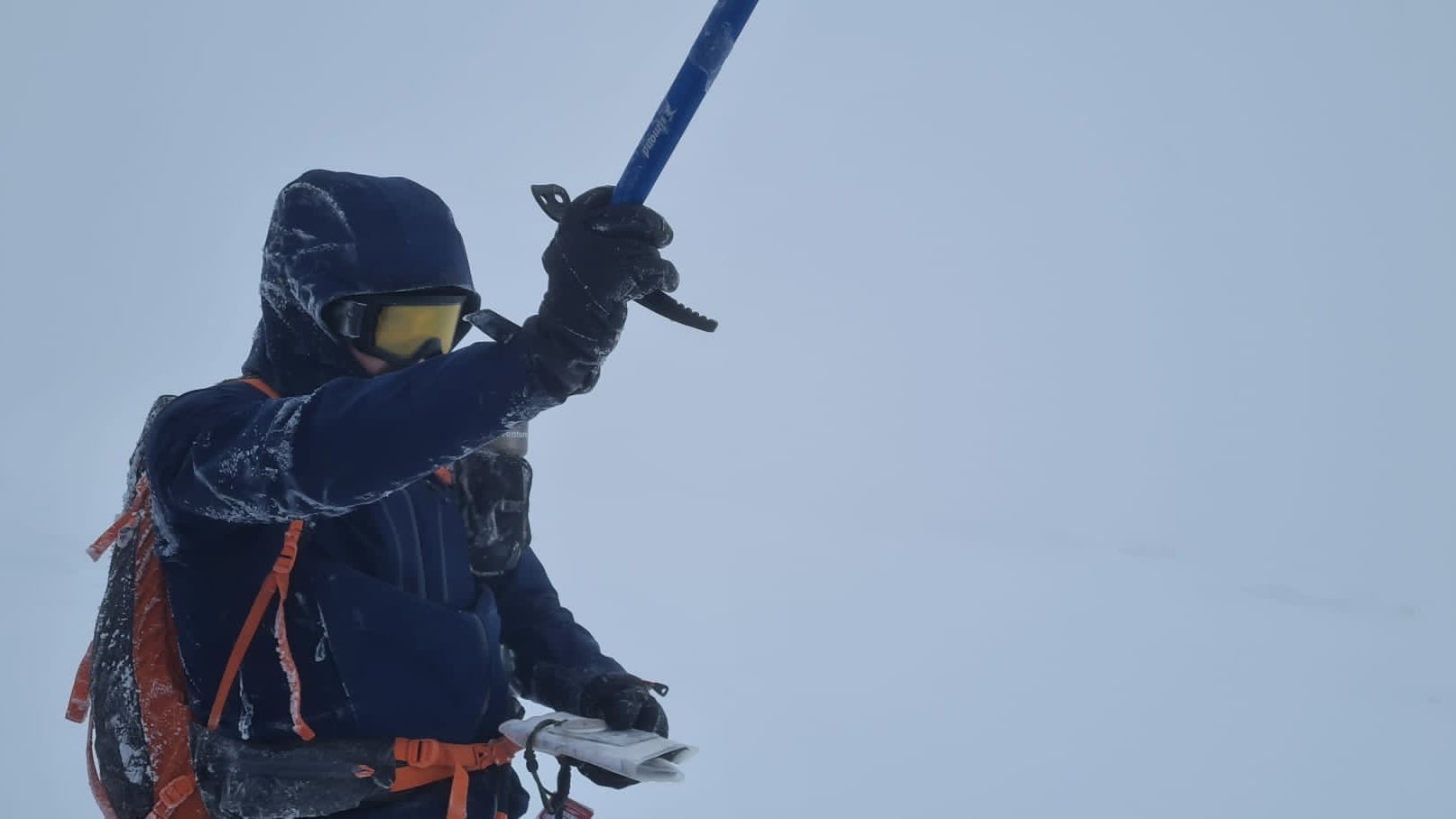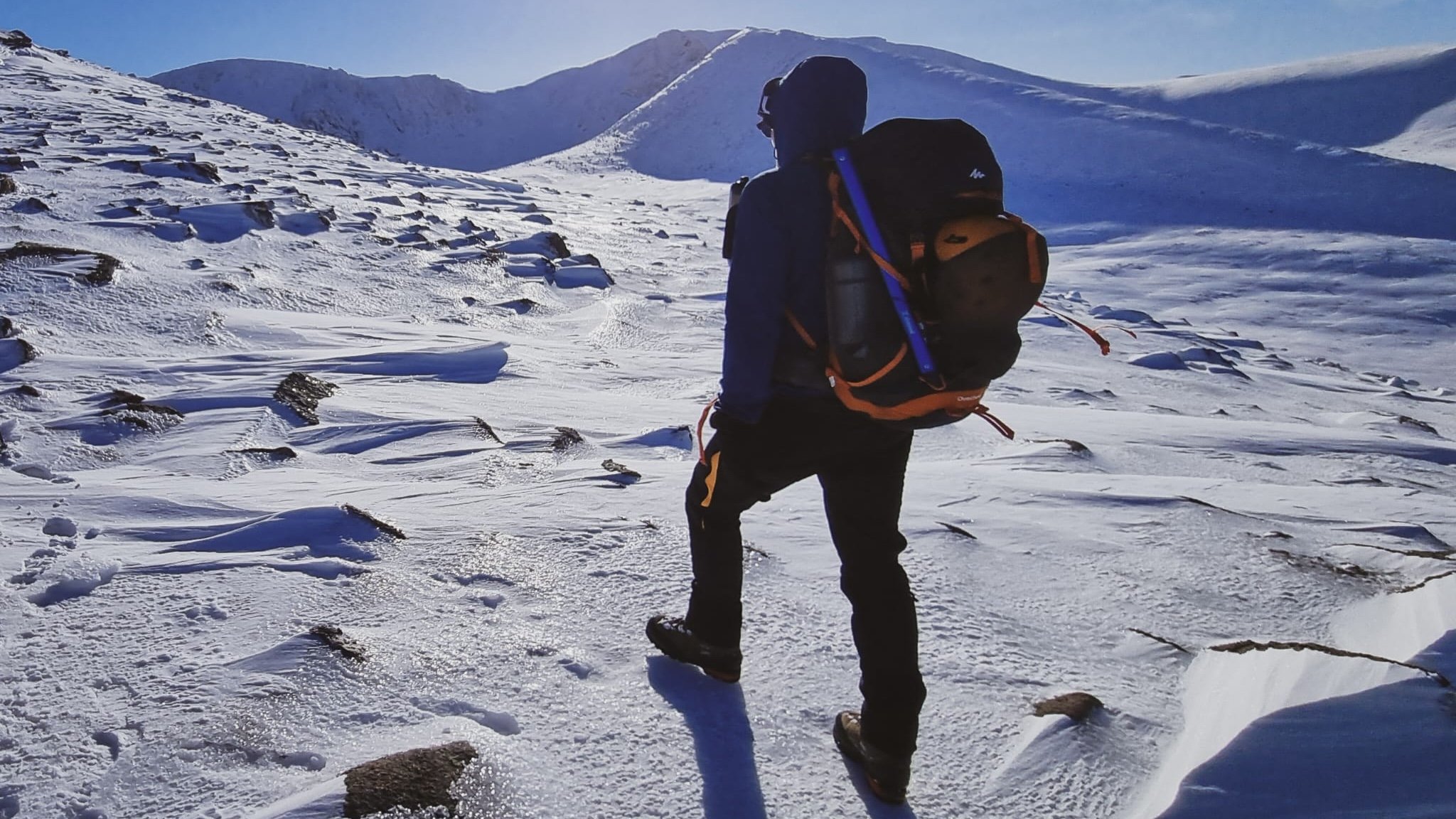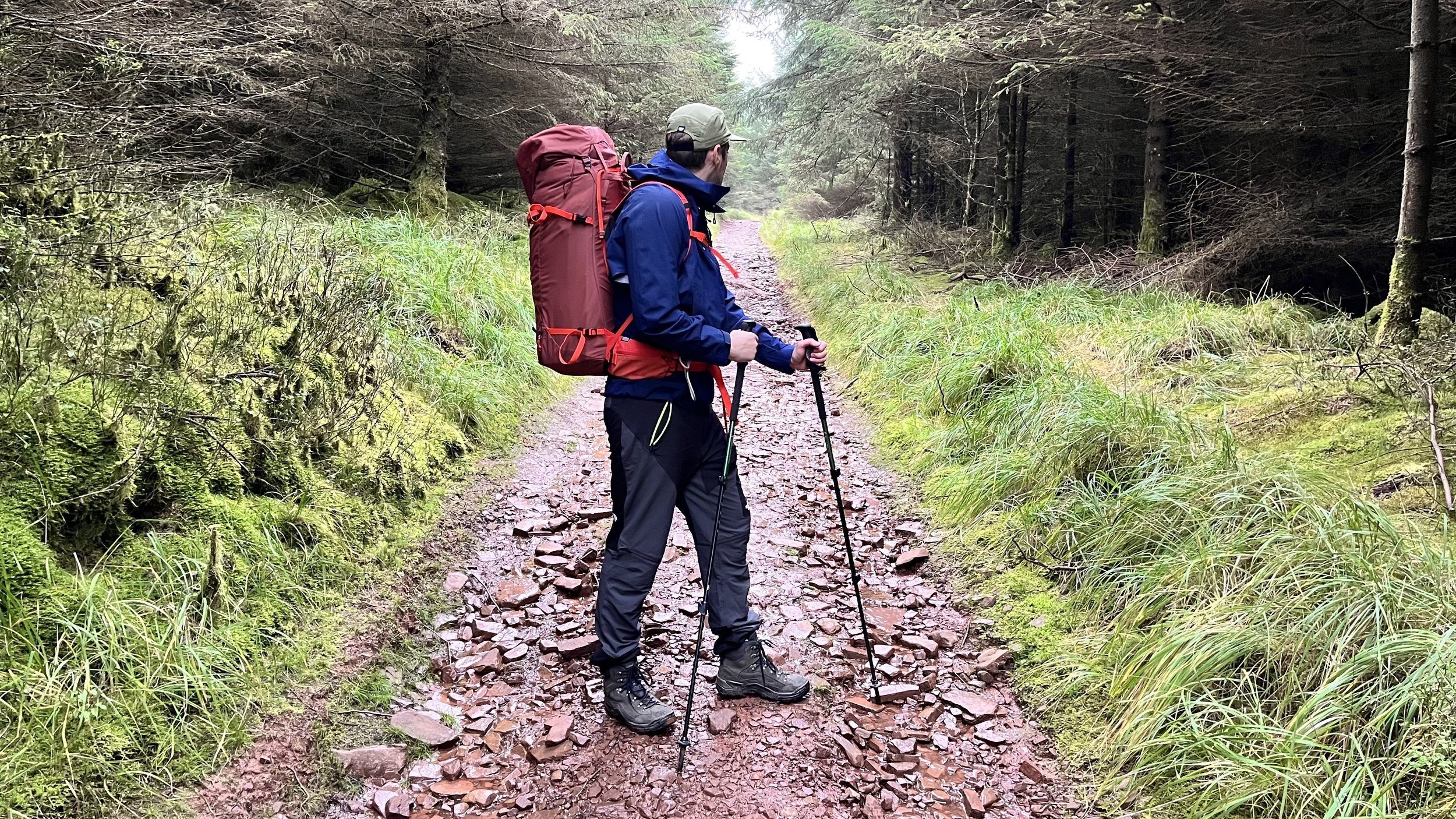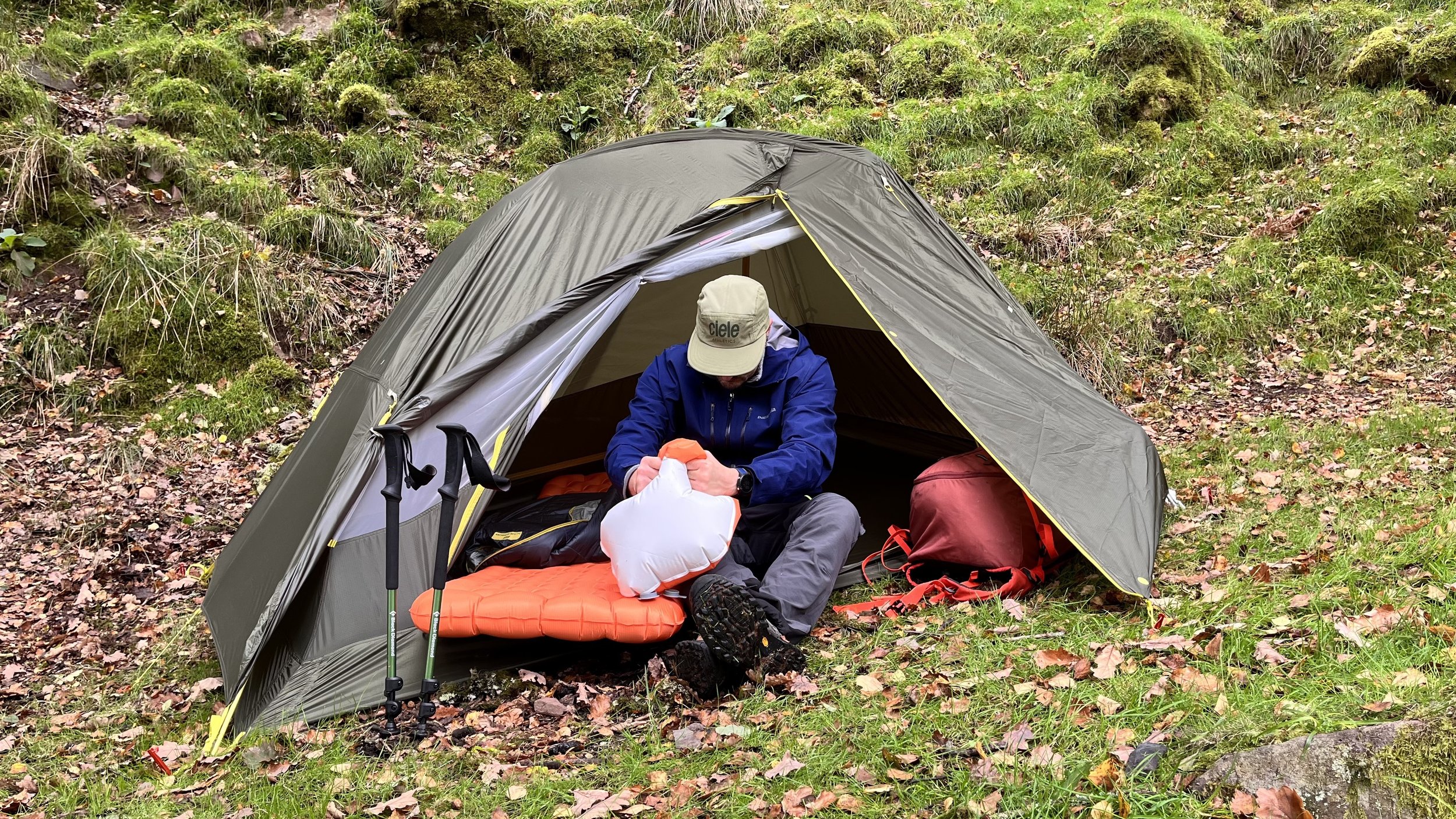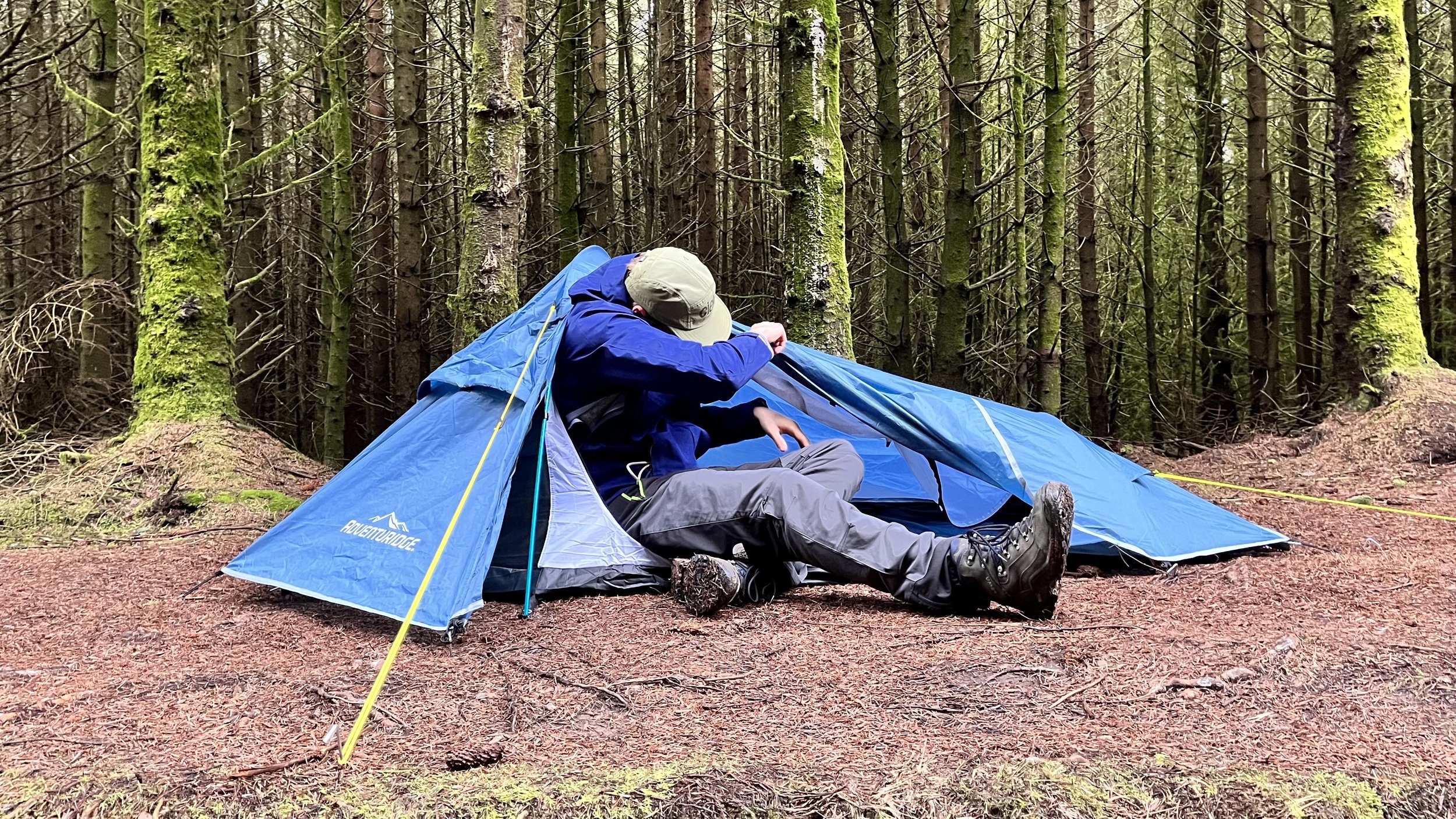Patagonia Triolet Waterproof hardshell long-term review: Reliable weather protection
The Patagonia Triolet hardshell is a 3-layer, durable water and windproof jacket that does an excellent job at keeping you dry and protected from all of the worst conditions the UK may throw at you. Feature-rich, good-looking enough to wear around town, and incredibly durable, it’s a versatile jacket that can be used on a variety of adventures — but only if you can stomach the price.
The Patagonia Triolet
Ideal for: Winter mountaineering, wet-weather hiking, backpacking, snowsports, general wear
Not suitable for: Trail running, fastpacking, ultralightweight activities
The Triolet waterproof jacket from Patagonia is the brand’s purpose-built and feature-rich hardshell, ideal for staying safe and dry on long wet days and Scottish winters. Versatile and thoughtfully designed, the jacket is as good to look at as it is to use, and can easily stave off the worst of the UK weather. It lends itself just as well to rainy wildcamping trips in spring and autumn as it does to Scottish winter mountaineering escapades — and it could easily be the only waterproof hardshell you ever need.
The Good
Very reliable
Huge pit zips
Very smooth zips
Adjustable hood
Wrists can be easily cinched-down over gloves
Numerous pockets
Great looking
The Bad
Expensive
Relatively heavy
Patagonia Triolet waterproof hardshell review
The Patagonia Triolet is a rugged, versatile and very hard-wearing waterproof jacket from one of the most beloved brands in the business. Designed to keep you safe on Alpine mountaineering trips and to keep you dry in a deluge, it comes with a comfortable fit that allows full freedom of movement, numerous pockets both inside and outside, huge pit zips for dumping heat and helmet-compatible, fully adjustable hood.
Thoughtfully designed, the Triolet delivers everything you need from a burly waterproof hardshell. It has been constructed from a PFC-free ePA membrane that gives the jacket a 30,000 mm hydrostatic head rating while the tough 70 denier outer makes this jacket one of the most durable and rugged in its class. Hailing from one of the most environmentally conscious brands in the outdoor industry, the Triolet has also been thoughtfully designed to have the smallest possible impact on the environment. Featuring Gore-Tex’s new ePA membrane, a fully recycled polyester outer and a PFC-free DWR coating on the outside, the Triolet offers great eco-credentials in a part of the market that is famously bad for the planet.
On average, the Patagonia Triolet weighs 510 grams when dry, which is far out of the realm of ultralight. When compared to models in this price range, it’s a clear heavyweight: It weighs 120 grams more than the similarly priced Arc’teryx Beta LT, 100 grams more than the pricier Berghaus Mountain Guide Alpine Pro and is only 15 grams lighter than the substantially cheaper Alpkit Definition.
When bought directly from Patagonia, the Patagonia Triolet will set you back £390. Naturally, this puts the jacket way outside the bounds of affordability to many and is an eye-watering sum that’s tough to stomach. When you compare it with other jackets in its class, however, the Triolet is actually reasonably competitive. Durable and reliable weatherproof layers are never cheap, especially those in the Triolet’s class. The Arc’Teryx Beta LT costs £10 more at £400, for example, and the previously mentioned Berghaus Mountain Guide Alpine Pro will set you back an extra £110, coming with an RRP of £500. The Kangri, Rab’s equivalent, fully-featured mountaineering hardshell will set you back £330 when bought directly from Rab, although this weighs 15 g more and comes with a 28,000 mm hydrostatic head rating — 2,000 shy of the Triolet’s 30,000 mm benchmark.
Our experience using the Patagonia Triolet waterproof hardshell jacket
In total, we’ve had our hands on a Patagonia Triolet for 4 years now. In that time, we’ve used it in pouring rain, driving snow and beating wind. We’ve taken it on multi-day hikes through the Brecon Beacons in practically all seasons, we’ve used it on thru-hikes of Dartmoor National Park, we’ve worn it on several-day circulars in the Lakes, and it’s kept us safe on many Scottish winter mountaineering trips. What’s more, we’ve also worn it skiing, used it on hot summer days when the rain just won’t let up, and even wore it as a last resort on a 30-km trail run through the Swiss Alps when we left our lightweight Marmot Precip Eco at home. So it’s safe to say that we’ve tested the Patagonia Triolet — it’s our most worn waterproof layer, having racked up thousands of miles on the trail over the last four years. And the best part? It still looks as good as new; even after all of the varied adventures we’ve worn it on.
The Triolet’s looks
The first thing we really appreciate about the Patagonia Triolet is the relatively clean look of the jacket. Unlike many other technical mountaineering hardshells, all of the Triolet’s features are tucked away into the coat: When not in the mountains, it almost looks like a regular waterproof jacket you may throw on on a rainy morning commute. Now, naturally, this shouldn’t really count when you’re out in the mountains, and this is also something we don’t really rate: We’re about functionality, not fashion. When it comes to certain garments, however, it’s always a shame when they’re resigned to only a few outings a year due to the overly technical nature of their design. As is the problem with big winter down belay jackets, 90% of their use will be when the weather in town demands it, such as on a cold, windy winter day when you’re heading to the pub or similar. For uses like this, the Patagonia Triolet stands out in our opinion, looking as good in the streets as it does in the hills, which makes for an incredibly versatile hardshell that you can always turn to.
Working up a sweat building a snowhole in the Cairngorms.
Waterproofness and breathability
When it comes to the waterproofness of the Patagonia Triolet, the jacket does a phenomenal job of fending off rain and keeping you dry. Seriously, this tank of a hardshell is endlessly impressive: Water has never got inside of ours once, aside from the inevitable soaking up through the wrist cuffs or the spray in through the hood. In regards to breathability, we’ve also been repeatedly impressed. As with any PFC-free Gore-Tex jacket, however, the Triolet only breathes when it’s dry. If you have a fresh layer of DWR coating on the Triolet, the water will bead off well and keep the garment breathing even in a downpour. But as soon as the coat wets out, the jacket loses its ability to breathe effectively. For that reason, we’ve often worked up quite a sweat in the Triolet when charging up hills in rainy conditions — but good luck finding a waterproof jacket that solves this problem. In comparison to cheaper models or more lightweight coats, such as the Marmot Precip Eco, the Patagonia Triolet breathes very well, or at the least to the degree that we’ve never wished for another jacket (even during high-intensity cold weather activities like skiing).
How to keep your hardshell breathable
As with other waterproof jackets made from more environmentally friendly materials, you will need to continually top up the DWR coating on the outside of the coat. This prevents the jacket from wetting out, which means it’ll stay breathable for longer. To do this, wash and reproof your Gore-Tex jacket with something like Nikwax Tech Wash a couple of times a season, and then top up the outer shell with a product like Nikwax’s TX.Direct Spray On DWR spray.
Windproofness
As with all Alpine mountaineering hardshells, the Patagonia Triolet makes easy work of the wind. Even in galeforce conditions, all you’ve got to do is zip this thing up and you’re instantly safe inside. In our experience, the wind simply can’t penetrate it, meaning that we’ve taken to wearing it as a windproof layer even on days when there’s no rain forecast.
Extra features
A true Alpine mountaineering hardshell, the Patagonia Triolet also comes fully featured and jampacked with design choices that can tangibly improve your experience in the mountains. Firstly, the toggles to cinch down the hood are so easy to use. Situated just under your chin, you can easily grip these even when you’re wearing thick winter climbing gloves to pull the hood tight. And for the adjustor around the waist, it’s a similar mechanism: You simply need to pull the drawchords that are found inside your pockets tight to batten down the hatches and stop any drafts from entering the jacket from below.
The Patagonia Triolet also comes with a built-in RECCO reflector so that search and rescue teams can more easily locate you in case there’s an avalanche. This is a detectable chip that is searchable via radar: It helps teams with the corresponding device find you more easily by pinging a signal back to search teams when they’re near your location. Additionally, the jacket features a large dump pocket for carrying items inside your jacket, two chest pockets for easy use when wearing a harness, and two large hand pockets that come with smooth easy-to-use zippers. The toggles on these can be a bit finicky in our experience, though, so we’ve always found it easier to take off our gloves before fiddling around with this, which is a shame. To make this easier, Patagonia could do with adding larger toggles that are easier to grip — but this is just a minor complaint and one that doesn’t really affect the otherwise stellar performance of the coat.
Weight and packability
When dry, the Patagonia Triolet weighs 510 g (size dependent). For the performance, this slight weight penalty is one that we’ve never been too concerned about. That being said, there are lighter models out there, such as the Arc’Teryx Beta LT which may be more suited to weight-conscious Alpine mountaineers. As for packability, the jacket can be squashed down to the size of a small training football, or pressed flat to sit at the top of your pack. In all honesty, we were a little surprised at how large the pack size is when we first got this coat. But having carried it around all four corners of the UK over the last 4 years, it’s never once been an issue, and the performance has always more than made up for its comparably larger weight and pack size.
Fit
As with many Patagonia products, the fit of the Triolet is decidedly boxy. Even though this might look a little ‘square’ on some people, it does mean that you can comfortably layer up under this thing, which is something you’ll be thankful for on the coldest mountain days. What’s more, the fit allows for solid freedom of movement, meaning you can raise your hands above your head without any pushback from the thick material the Triolet is made from, which makes the jacket comfortable to wear even on the longest days.
Patagonia Triolet waterproof jacket FAQs
-
The Patagonia Triolet is about as waterproof as these types of jackets get. Manufactured from a 3-layer Gore-Tex fabric and featuring a 30,000 mm hydrostatic head rating, it takes a lot to allow moisture to penetrate this jacket. We’ve worn it on 12-hour hikes where the rain has barely let up, and aside from water soaking up through the cuffs and the inevitable bits that get in through the hood, it has always kept us bone dry.
-
For such a thick and durable waterproof hardshell, the Patagonia Triolet is surprisingly breathable. You can easily wear it all day on long winter hikes without building up too much of a sweat in this jacket, though you do quickly start to sweat in warmer temperatures. To optimise breathability, the jacket comes with giant pit zips that are easy to operate and let you dump heat on the go, and the cut of the jacket means it’s still comfortable even if it’s half unzipped.
-
The Patagonia Triolet performs excellently in UK winter conditions: Manufactured from a 3-layer, ultra-durable Gore-Tex fabric which boasts a 30,000 mm hydrostatic head rating, it can easily stave off the worst of the British weather, ranging from deluges of rain or mountains of snow through to the brutal British wind, the likes you’ll often face in places like the Cairngorms. Coming with numerous pockets for gloves, maps and water bottles, as well as two giant pit zips, you can easily carry the things you need while optimally regulating your temperature.
-
Yes, we think so. It’s durable, reliably waterproof, offers excellent breathability, is feature-rich and looks good enough that you could wear it around town. Granted, it’s expensive, but if you’re looking for a robust do-it-all jacket that you can wear on all but the hottest of days, we think the Patagonia Triolet is a worthy investment.
-
The Patagonia Triolet is very durable. It features a 70 denier recycled polyester outer that is practically bombproof when out in the hills. Bracken can’t snag this thing, and scraping against rough rock will barely leave a scratch. In its class, it one of the most durable hardshells out there.
Conclusion
Overall, we love the Patagonia Triolet. It’s so rugged, reliable and reasonably good-looking that it is simply a phenomenal all-round mountain coat. It performs amazingly in the wind, keeps you safe and dry in the worst British weather imaginable, and is small and easy to carry considering its performance. Feature-rich and designed with the end user in mind, the jacket also performs well in a huge variety of conditions, ranging from windy spring meanders to brutally stormy Scottish winter mountaineering days. Granted, it’s pricey, but being competitive with other products in its category, we’d consider the Patagonia Triolet a solid buy, and we’d have no qualms about buying a replacement the second we wear this thing out. Which, to be clear, we don’t expect to need to do any time soon. Even after four years of very frequent use, ours still looks as good as new — and we’re excited to use it on many more adventures to come.
